On December 12, 2015, as a “Takashi Murakami: The 500 Arhats” exhibition-related Public Program, elementary school and junior high school students set about making their own newspapers. Entering the exhibition, one is immediately immersed in the world of Takashi Murakami, and the children engaged in various activities while taking in the works in the show.
The mission of the “Kids Newspaper Project” was to have children look at the exhibition through their own eyes, and actively seek out interesting points. They also had to interview people involved in Murakami's practice, and the exhibition, and convey to others what they learned, and what impressed them most.
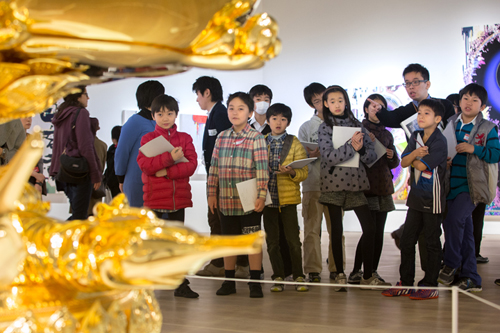
The children said they had previously written reviews of books they had read and of art exhibitions. But how do articles designed to pass on information to others differ from reviews? We started by inviting Sato Yoshikazu, Chief Editor of the Asahi Shogakusei Shimbun and Asahi Student Newspaper, papers aimed at a younger readership, to talk about reporting and writing articles.
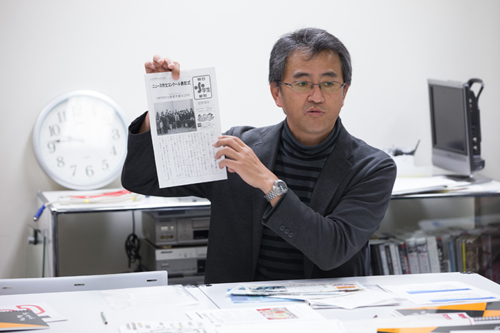
Sato Yoshikazu, Chief Editor of Asahi Shogakusei Shimbun and Asahi Student Newspaper
The most important things when writing a newspaper article are to get the facts right, and to write objectively. The children learned the basics of journalistic writing, that is, the 5W1H of who, what, when, where, why and how. For example, if one is going to write that a particular work was “interesting,” it is essential to also explain why. If you are going to write that something is “a very big work” you need to write more specifically, for instance, “the work is three meters high.” Communicating your personal response to something to other people is actually very hard.
Having thus acquired some tips, they headed off to the exhibition, where Museum staff talked about the works. The sight of works like the glistening golden sculpture and massive 100m-long The 500 Arhats had everyone buzzing with excitement. The children swapped views and asked questions about anything that puzzled them. Having taken a good look at the exhibition, their next task was to meet with Kasahara Chiaki, a producer at Takashi Murakami's company Kaikai Kiki.
The children asked Kasahara all sorts of questions - what she enjoys about her job, and what is difficult; what kind of manga Murakami reads, how he usually makes his art. Kasahara answered each one patiently and thoughtfully.
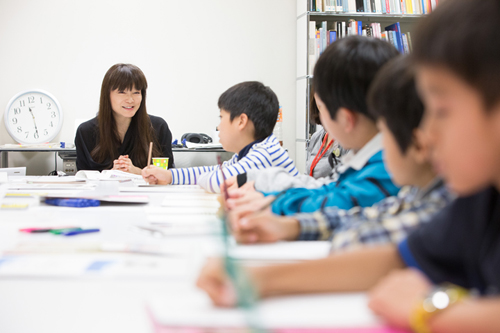
Quizzing Kasahara-san
After lunch, it was time to start writing. Each participant was charged with producing their own original, special-edition newssheet: deciding on the topic, writing the story, and adding photos they had taken themselves. In order to hold the reader's attention right to the end, Sato advised them to write the most interesting things first. Each child carefully considered what to tell readers about Murakami's works. Taking detailed advice from Sato, they revised their articles several times, showing rapid improvement. With help from newspaper staff they then used computers to complete their own original newspapers.
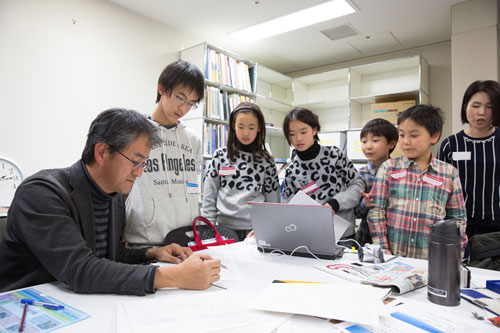
Editor Sato reviews the children's write-ups
While they were doing this the children learned that Murakami himself was appearing at the “Rethinking Japanese Monozukuri (Manufacturing)” talk session being held at the same time in the exhibition area. Heading there to listen to Murakami in person, the young reporters were greeted by the artist, and even managed to have a photo taken with him.
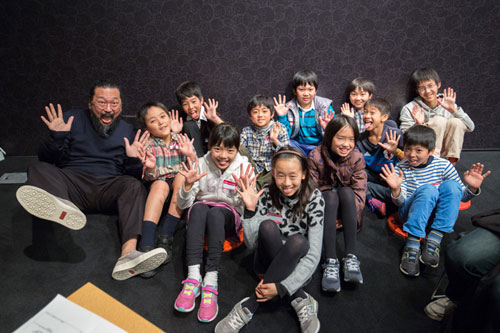
Scoring a photo with Murakami-san!
Having never expected the artist to be so close by, they were very surprised. After listening to Murakami speak for a while about his work, the reporters went back and presented their completed papers to each other to round off the project.
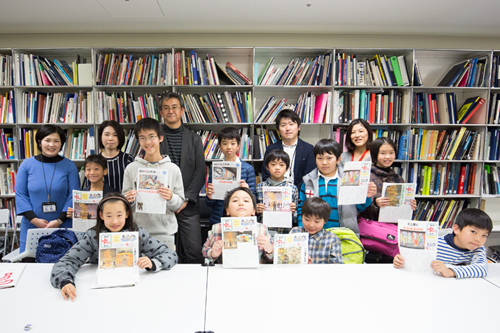
The completed newssheets!
The children spent a whole day at the Mori Art Museum with various staff members and their fellow fledgling reporters, and we anticipate memories of viewing “Takashi Murakami: The 500 Arhats” thoroughly for the purpose of making a newspaper, being able to ask Kasahara Chiaki about Murakami and the practical side of making the works, and having the chance to actually meet the artist, will stay with them for a long time. It is our hope that having the opportunity to learn via art and art museum will support children's development - children being full of natural curiosity - and add an extra, different element to what is already an exciting stage of life. To this end the Mori Art Museum will continue to offer a diverse range of public programs.
Note: A portion of participating 7th-grader Honma Ryotaro's article was published in the Asahi Student Newspaper (January 24, 2016).
Text: Shirahama Eriko (Educator, Mori Art Museum)
Photos: Tayama Tatsuyuki
■Related links
・Takashi Murakami: The 500 Arhats
October 31 [Sat] 2015 - March 6 [Sun] 2016
・More details on “Takashi Murakami: The 500 Arhats” Two New Public Programs:
Tanaka Min's Performance and “Kids Newspaper Project”!








